POWWOW PROGRAM
1953 - 2023

1953 - 2023
We’re so glad you’re here! Whether this is your first powwow or your fiftieth, you’re part of what makes this day so special. For those joining us for the first time—welcome to the arena! You’re in for an unforgettable experience, and we hope it’s just the first of many. To all the familiar faces, it’s good to see you back—we’ve missed you!
Powwows are all about connection—connection to culture, to community, and to each other. And here’s the best part: this isn’t just a show. Throughout the day, you’ll have plenty of chances to join the dancers in the arena. It doesn’t matter if you’ve got the moves or not—just get out there, feel the drum, and have fun. It’s the kind of experience that sticks with you long after the day is over.
And let’s talk food. If you’re here, you’ve got to try an Indian taco. It starts with frybread—the best bread ever—and then it’s loaded with toppings. Sweet, savory, whatever your vibe, there’s no wrong way to enjoy it. Honestly, you might end up heading back for seconds (we won’t judge).
Be sure to check out the vendors, too. There’s a lot of incredible beadwork, art, and gifts waiting to be taken home—and with Christmas around the corner, this is your chance to snag something unique. Plus, every dollar you spend goes right back to supporting Native artists and their families, so shop away!
Thank you for being here. Your presence helps keep this celebration going, and it means so much to all of us. Enjoy the songs, the dancing, the food, and the fun—and we can’t wait to see you back next year.
American Indian Center Board of Directors
Jessica Pamanicutt Menominee President
Damien Kardaras Treasurer
Noelle Garcia Cherokee Secretary
Dr. Nataka Moore African American Director
Mark Ford Chiricahua Apache Director
Sarina DiMaso Chiricahua Apache Director
American Indian Center Staff
Dave Spencer Mississippi Chata/Diné Co-Executive Director & Director of Arts and Culture
Jay Young Citizen Potawatomi Nation Co-Executive Director & Director of Media, Marketing and Communications
Ronnie Preston San Carlos Apache Cultural Ambassador
Paul Molina Texas Kickapoo Chef & Food is Medicine Project Coordinator
Shawn Canning, JR. Sisseton Wahpeton Oyate Programs Assistant
In the Chicago area, the powwow is a celebration of intertribal Native American culture. It is also a time to rekindle old friendships, reaffirm commonly held values and share this vibrant culture and celebration with the Chicago community at large.
Historically, powwows evolved from ceremonials of the Grass Dance societies that formed during the early 1800s. While many tribal customs and religious practices were lost through government restrictions, the Grass Dance was one of the few celebrations permitted in the new era. Diverse communities and tribes were invited to these celebrations. As a result, ownership rights of sacred Grass Dance items were transferred from tribe to tribe, giving birth to intertrialism through the shared experience of song and dance.
After World War II, powwows were revived, and in the time since, powwows have evolved to reflect contemporary conceptions of these traditional values. The use of brighter colors, modern methods of production in regalia design and more rigorous dances are some examples of the changes the powwow has undergone in the past 70 years.
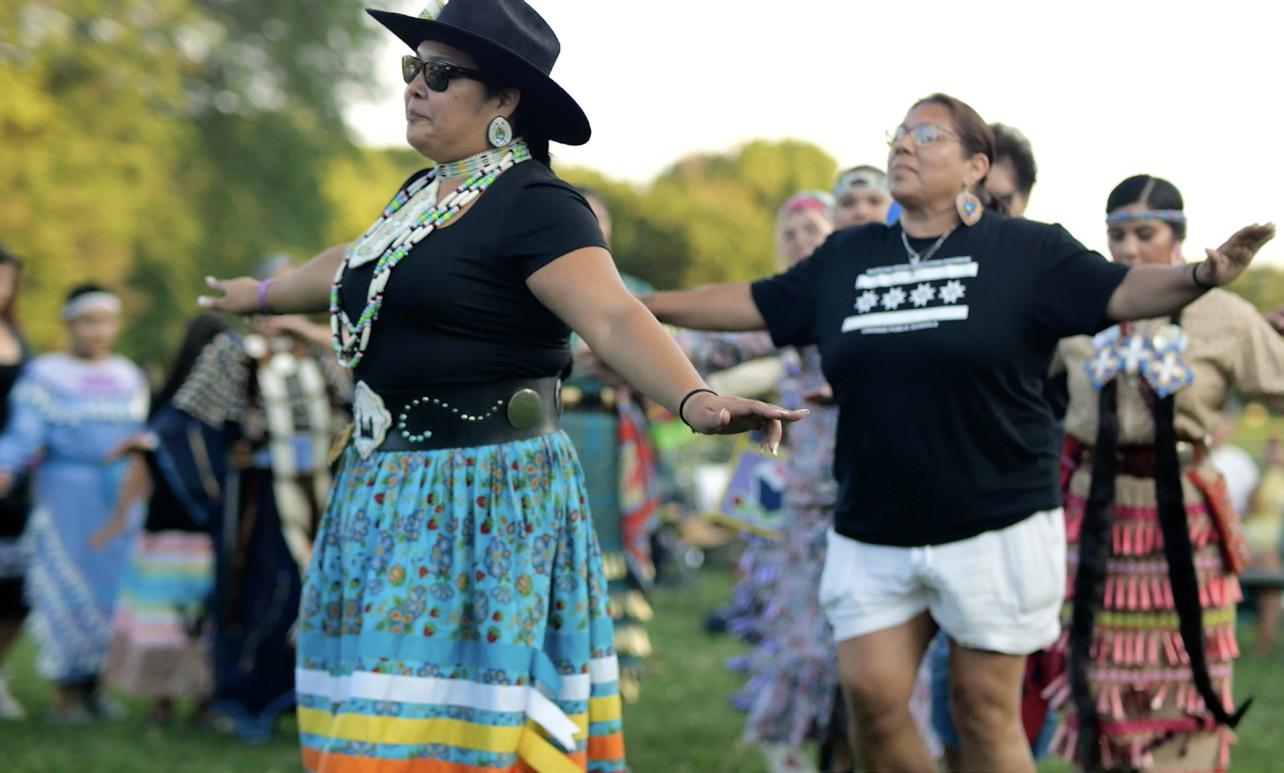
Powwows are held to celebrate a variety of different occasions. However, the two most common kinds of powwows are traditional and competition powwows. Traditional powwows are for the purpose of honoring tradition and retaining and celebrating Native values. Traditional powwow are informal. Competition powwows are held in a festival environment and invite both Native and non-Native people to share the cultural experience through food, art and music, as performers compete for championships and cash prizes.
In its 71st year, the Annual Chicago Powwow continues to mobilize Chicago’s large and diverse Native community. Finally, the Annual Chicago Powwow is an expression of intertribal art, culture, community and educational endeavors. This event serves to celebrate the presence and contribution of Natives in metropolitan Chicago and the state of Illinois.
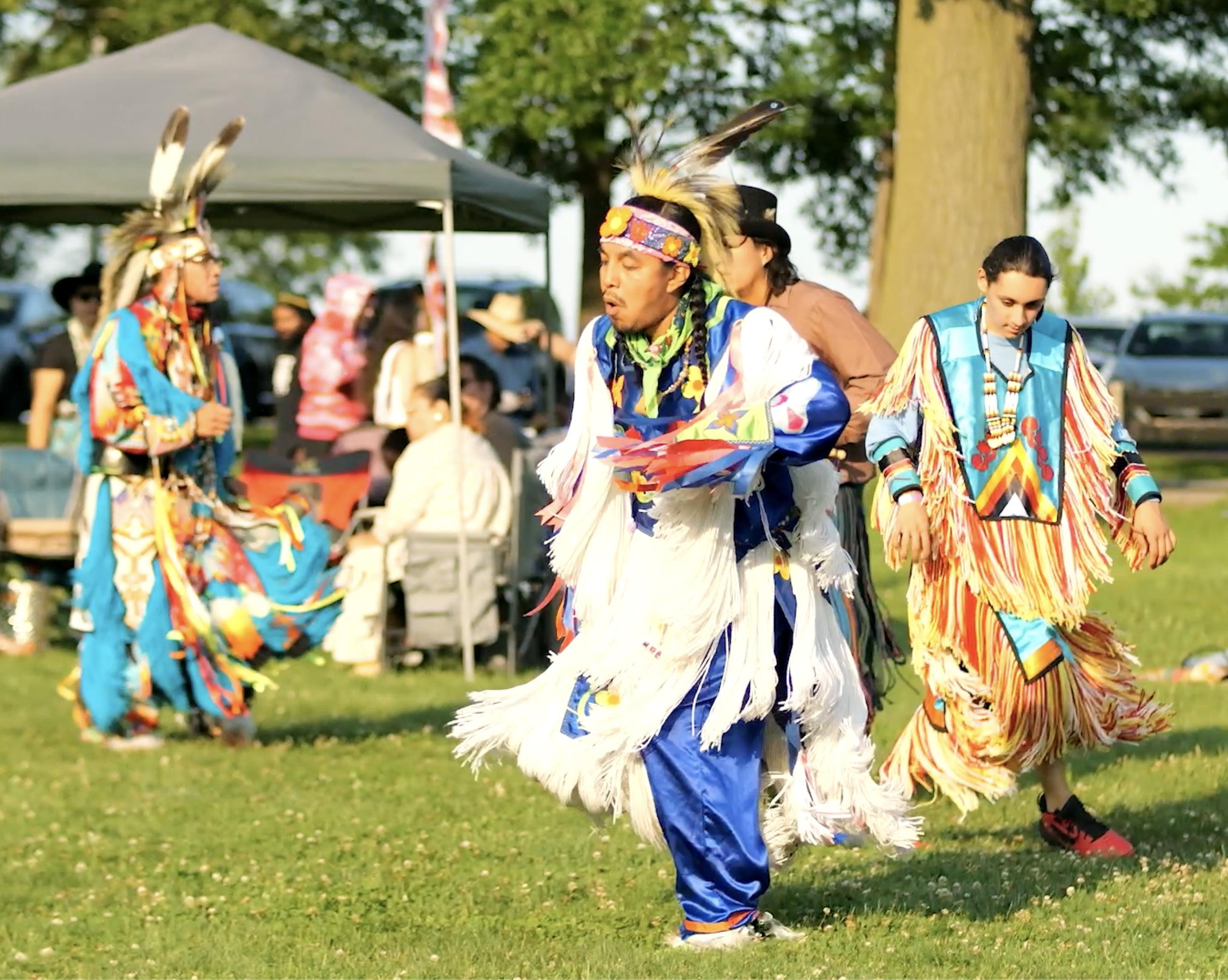
The Grass Dance regalia consists of yokes and breechcloths fringed with anklets and sheep bells worn around the lower legs. Grass dancers may use dips, sways and sliding steps. Yarn is sewn onto the yoke to represent long, blowing blades of prairie grass. This dance originated on the Plains and is the oldest style of powwow dance. There are several stories of origin. One (Ponca) story tells of a long time ago when people went to an isolated area to give thanks. Some of the men stomped down the grass to make a way for dancing.
Fancy dancers weather bustles, typically with brightly dyed hackle feathers, decorated yokes and breechcloths. Angora anklets with sheep bells, beaded moccasins, arm bands and a porcupine roach complete the ensemble. This dance originated in Oklahoma and is defined by a high level of endurance. The Fancy Dance allows the performer to demonstrate athletic ability and originality through choreography and acrobatics. Some stories suggest that the dance represents a warrior preparing for war.
This dance comes from the Ojibwe people and started around 1920. The dresses are decorated with rolled tobacco can lids that hit against each other when the dancer moves, creating the pleasant “jingle” sound. The dancer carries a feather fan and sometimes a scarf or beaded purse. Dance regalia consists of beaded leggings, moccasins and a beaded or concho (silver or nickel) belt. The story behind the dance is one of healing illness and the dress was envisioned during a dream. Besides the traditional jingle step, the dancers also use the side-step, in which the dancer moves both feet along in a slide-type motion.
Wearing Eagle feather bustles, a bone bead breastplate, legging, beaded moccasins and belt, ankle bells, a porcupine roach (headdress), breechcloth and various beaded accessories, the dancer carries an Eagle feather fan. Dancers often paint their faces in different styles, sometimes derived from a family or national emblem. The story of the dance is that of a war party recounting its feats for the nation. Some stories tell the story of a hunt.
Depending on the individual’s nation, this dance type includes more than one dance style. In this dance, the dancers wear either buckskin or cloth regalia. Buckskin dresses often have fully beaded yokes, long fringe and the dancers may wear long breastplates, beaded moccasins and leggings. Cloth dresses are decorated with elk teeth, dentalium shells, or breastplates. Both buckskin and cloth dancers carry a shawl folded over one arm and carry an Eagle feather fan. This dance is one that requires much skill to stay in perfect rhythm. Stepping lightly, slightly “bobbing” up and down, allows the fringe on their dresses and shawls to sway gracefully.
The Fancy Shawl dance is the most modern of the women’s dances and gives dancers the opportunity to demonstrate their individual agility and grace. In the early 1900s, shawls replaced heavy blankets and buffalo robes worn by women. When the competition powwow evolved, the Fancy Shawl dance became a new category for competition. This dance is said to represent the transition from cocoon to a butterfly. Dancers wear calf-length skirts, a beaded or sequined cape/vest, and matching leggings and moccasins. The shawl is worn across the shoulders and held slightly out at the elbows. The dancer uses spins and freestyle footwork to demonstrate their originality.
1:30-2:30 p.m Dancer Check-In
2:50 p.m. Drum Roll Call
3 p.m. Afternoon Grand Entry
3:15 p.m. Introduction and Welcome by Dave Spencer
3:30 p.m. Intertribal Dancing
4 p.m. Afternoon Youth Dance Special
4:15 p.m. Intertribal Dancing
4:30 p.m. Afternoon Women’s Dance Special
4:45 p.m. Afternoon Men’s Dance Special
5 p.m. Intermission—Featuring a Special Visit from Native Santa Claus
5:50 p.m. Drum Roll Call
6 p.m. Evening Grand entry
6:15 p.m. Intertribal Dancing
6:30 p.m. Feather Pick-Up Dance
6:40 p.m. Evening Youth Special Dance
6:50 p.m. Intertribal Dancing
7 p.m. American Indian Center Special Exhibition by Ronnie Preston
7:15 p.m. Potato Dance Special
7:25 p.m. Evening Women’s Special Dance
7:40 p.m. Evening Men’s Special Dance
7:55 p.m. Ugly Hoiday Sweater Contest
8:05 p.m. Intertribal Dancing
8:25 p.m. Closing Song
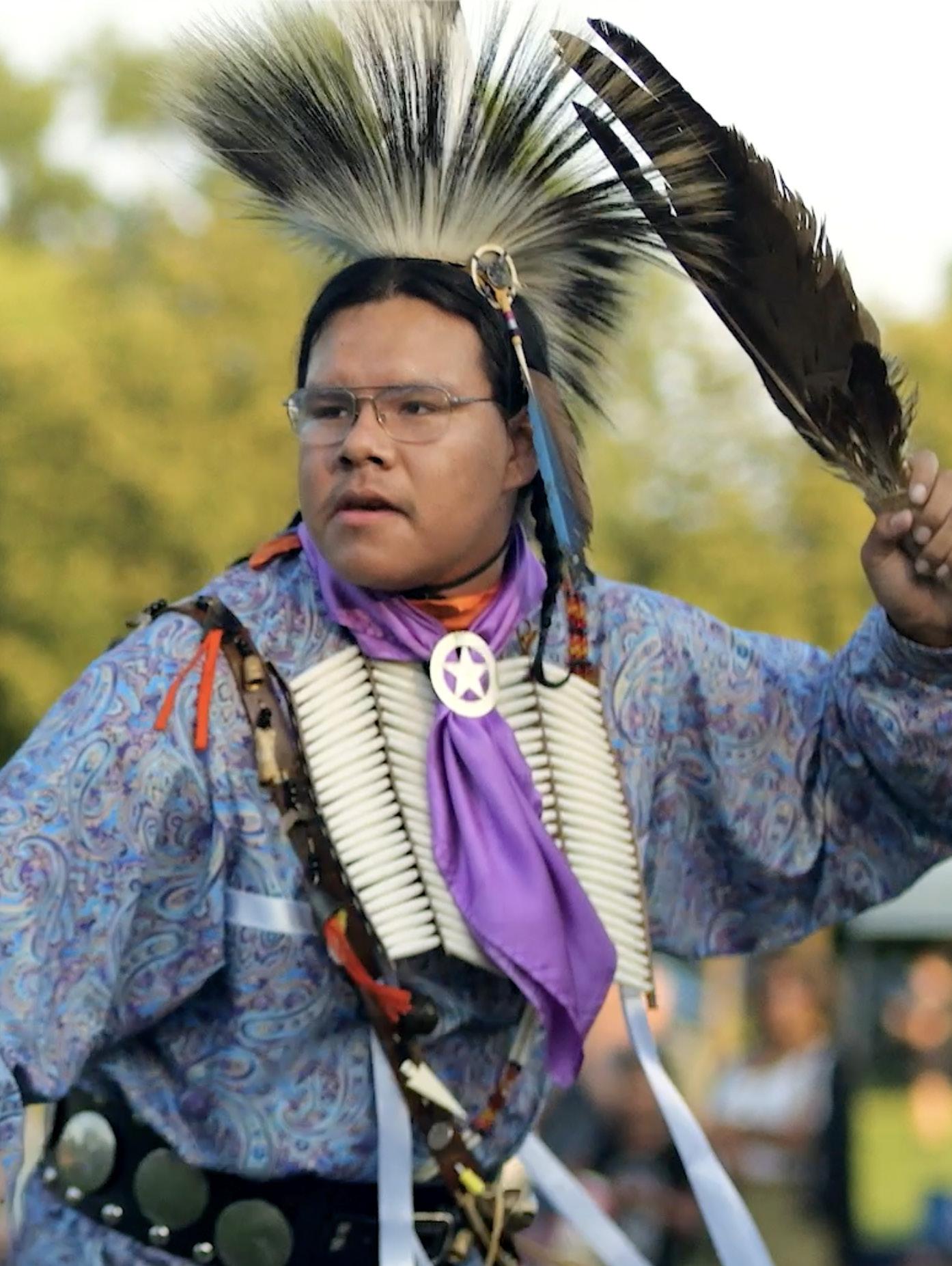
Discover the many ways you can support our mission and the Chicago Native community
Your generous donations allow us to host programming and events to further our mission
We cannot host events without the support of our dedicated volunteers from across the Chicagoland area
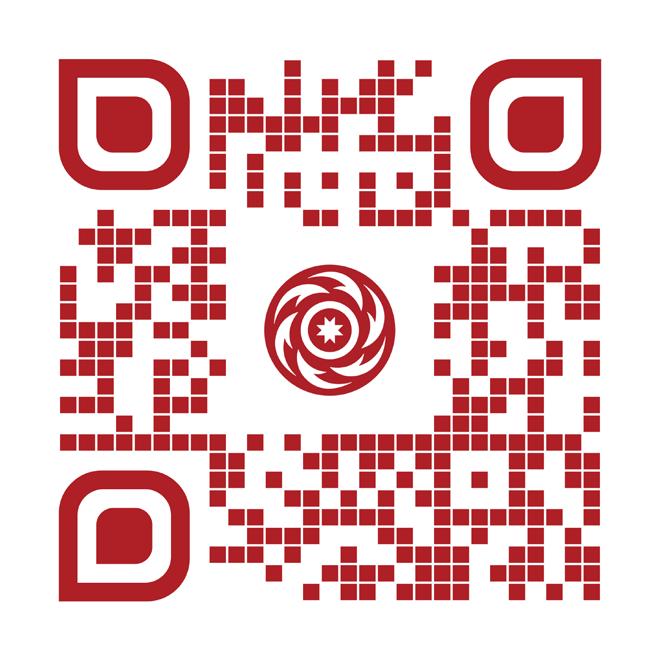
Liking, following and sharing our social media posts helps spread the word about the wonderful things the American Indian Center is doing
Participating in events hosted at the American Indian Center is a wonderful way to support the organization
Dear Friends and Supporters,
Welcome to the 71st Annual Powwow of the American Indian Center. It’s always incredible to gather with you all, and today is a reminder of how much we can accomplish when we come together to celebrate our culture, community, and shared journey.
This past year has been one of reconnection and growth. We’ve been thrilled to see faces we haven’t seen in years showing back up at the center, alongside new faces eager to join our community. Whether you’re returning or joining us for the first time, we’re honored to have you here.
Together, we’ve celebrated some remarkable moments. Our first-ever Powwow at the Lake brought the beauty and spirit of our traditions to the heart of Chicago’s lakefront. Indigifest introduced us to new friends and partners, allowing us to build bridges with other communities while sharing our culture through music, food, and art. And our Food is Medicine Gala was a powerful evening that raised critical funds to support the well-being of our Native community.
As we look to the future, we’re excited for what’s ahead. Starting in January, we’ll launch a full year of programming with the Forest Preserves of Cook County, bringing our shared love for nature and culture to life in new ways. In 2025, we’re already planning to bring Indigifest back, building on the connections and partnerships we forged this year. And with the launch of Unstoppable Voices, a storytelling initiative funded by our Healing Illinois grant, we’ll empower our community to share their stories and reclaim their narratives through Native first voice.
There’s even more in the works that we can’t share just yet, but we’re so excited about the possibilities and can’t wait to announce them soon.
Through it all, one thing remains clear: none of this would be possible without you. Whether you’ve attended events, supported our programs, or simply shared our work with others, your generosity and belief in us make all of this possible. We are grateful for every moment of support and for the trust you place in us to carry this work forward.
Thank you for being here today and for walking alongside us. Together, we’re not just preserving our culture—we’re growing, adapting, and building a stronger community for generations to come.


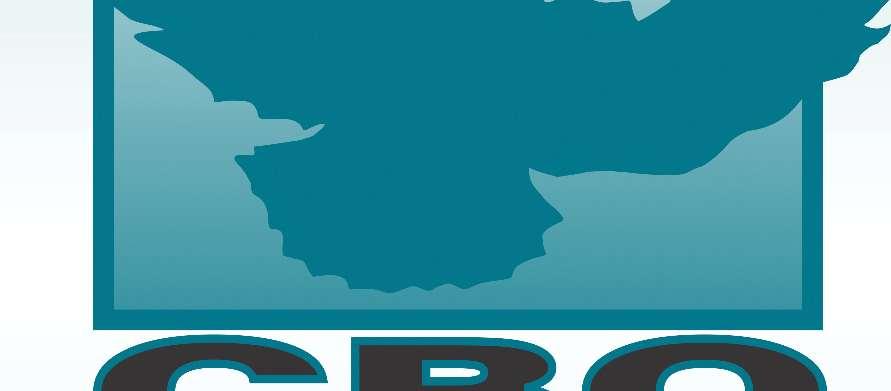













Without the support of our generous sponsors, events such as our 71st Annual Chicago Powwow would not be possible. Chi-Migwitch (Big Thanks) to each of our sponsors!


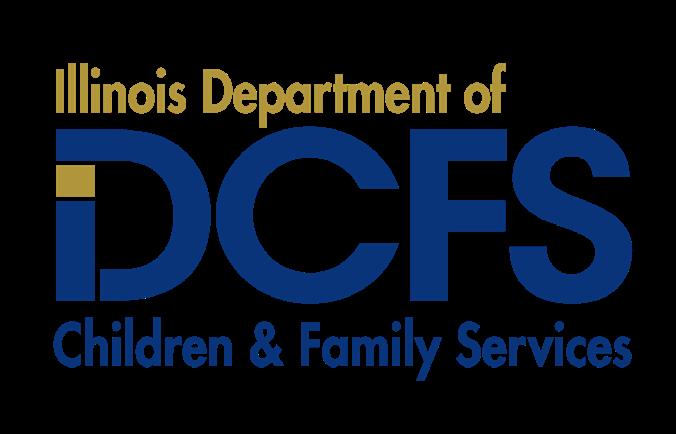
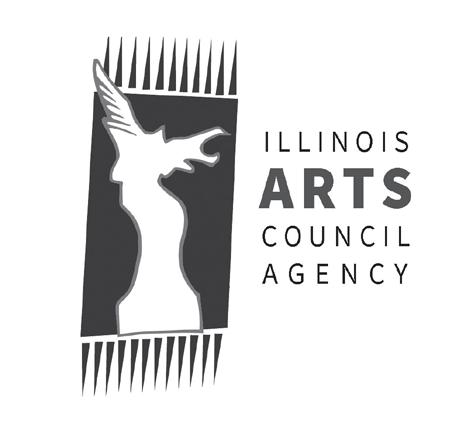

The American Indian Center would like to offer special thanks to the following people and organizations. Without their generosity, this 71st Annual Powwow would not have been possible.

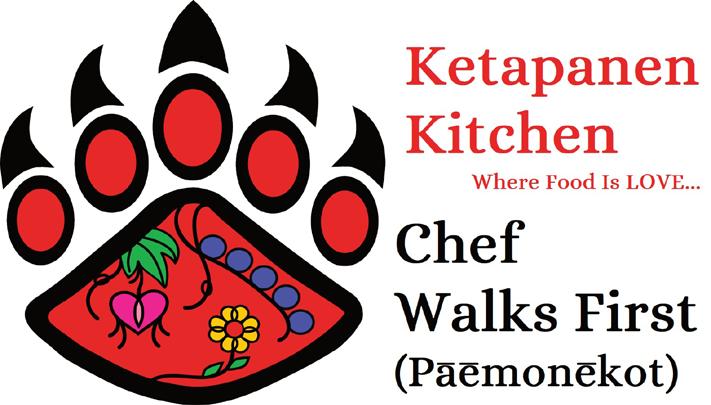
We would also like to extend a thank you to everyone who attended today and made a donation. It’s through your generosity that the American Indian Center is able to continue our mission.

If you enjoyed today’s event, please scan the QR code and help support future programming at the American Indian Center!